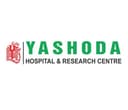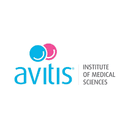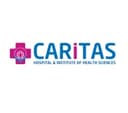Fellowship in Musculoskeletal Radiology
OR
Prepared by Docthub Courses Team ∣
Last updated on 11 Jun 2025
Overview
A Fellowship in Musculoskeletal Radiology under the specialty of Musculoskeletal Radiology is designed to provide advanced training in the imaging and intervention of musculoskeletal disorders. The duration of the program is generally 12 months depending on the institute offering the program. The program focuses on core areas like Diagnostic Imaging, Interventional Procedures, Musculoskeletal Pathologies, Advanced Imaging Techniques, etc.
Don’t Miss:Fellowship in Musculoskeletal Radiology

Table of Content
What is a Fellowship in Musculoskeletal Radiology?
A Fellowship in Musculoskeletal Radiology is a specialized post-residency training program that focuses on the advanced imaging and diagnostic evaluation of musculoskeletal conditions. The program equips radiologists with expertise in imaging-guided procedures, sports injuries, arthritis, bone tumors, and trauma-related pathologies, preparing them for roles in clinical practice, research, and academia.
Course Highlights
| Particulars | Details |
| Course Name | Fellowship in Musculoskeletal Radiology |
| Course Type | Fellowship Program |
| Duration | Generally one year (variable based on institution) |
| Eligibility | Must be a graduate of a diagnostic radiology residency; further requirements may depend on the institution |
| Admission Process | Submission of CV, personal statement, letters of recommendation, and possibly an interview |
| Fees | Variable based on the institute and program format |
| Colleges in India | Ganga Hospital, Coimbatore, Tamil Nadu Y. Patil Medical College, Hospital & Research Centre, Pune, Maharashtra Max Super Speciality Hospital, New Delhi Jaipur Institute of Pain & Sports Injuries (JIPSI), Jaipur, Rajasthan |
| Job Roles | Hospitals & Diagnostic Centers Academic & Research Institutions Private Practice |
Eligibility Criteria
To qualify for this fellowship, applicants should have completed a diagnostic radiology residency program successfully. Some institutions might require an ACGME-accredited residency or certain medical licenses, depending on local regulations.
Course Duration
The course typically takes 12 months, but the duration may vary depending on the institution.
Fees
The tuition fees for this fellowship vary based on the institution, location, and program resources. Candidates must visit individual program websites for detailed fee structures.
Who Should Apply for This Fellowship?
This fellowship is suitable for radiologists who wish to:
- Specialize in musculoskeletal imaging and interventions
- Develop skills in diagnosing challenging musculoskeletal disorders
- Collaborate closely with orthopedic surgeons, sports medicine physicians, and rheumatologists
- Improve career opportunities in academic, research, or specialized clinical environments
Why Pursue a Musculoskeletal Radiology Fellowship?
- Expert Advanced Imaging Skills: Enhances radiologists' skills in interpreting musculoskeletal conditions through MRI, CT, and ultrasound.
- Collaborative Practice Opportunities: Opens interdisciplinary cooperation with orthopedic specialists, sports medicine experts, and rheumatologists.
- Varied Career Options: Alumni can join hospitals, diagnostic imaging centers, academia, and research institutions.
Entrance Exam
Most institutions do not require an entrance examination. However, certain institutions might have specific eligibility requirements, including ACGME-accredited residency training or eligibility for medical licensure.
Admission Process
Admission to a Fellowship in Musculoskeletal Radiology typically involves:
- Submission of Application – Candidates must provide a CV, personal statement, and letters of recommendation.
- Interview Process – Some programs conduct interviews to assess candidates' suitability for the fellowship.
Syllabus & Curriculum
The curriculum generally includes:
| Year/Semester | Core Topics Covered |
| Semester 1 | Musculoskeletal Anatomy & Physiology – Understanding the structural and functional aspects of bones, joints, and soft tissues. Fundamentals of Musculoskeletal Imaging – Introduction to radiography, CT, MRI, and ultrasound in musculoskeletal assessment. Musculoskeletal Pathologies & Trauma Imaging – Recognizing fractures, dislocations, and degenerative conditions. Ultrasound in Musculoskeletal Radiology – Diagnostic applications and interventional techniques. Basic Image-Guided Procedures – Introduction to biopsies, aspirations, and injections under imaging guidance.
|
| Semester 2 | Advanced MRI & CT Techniques – High-resolution imaging for sports injuries, arthritis, and tumors. Interventional Musculoskeletal Radiology – Hands-on training in image-guided interventions and therapeutic procedures. Research & Case-Based Learning – Academic projects, clinical case discussions, and evidence-based practice. Collaborative Learning & Multidisciplinary Approach – Working with orthopedic surgeons, physiotherapists, and rheumatologists. Final Assessment & Practical Evaluation – Comprehensive examination and clinical skill assessment for fellowship completion. |
Top Institutions Providing This Fellowship
- Ganga Hospital, Coimbatore, Tamil Nadu
- Y. Patil Medical College, Hospital & Research Centre, Pune, Maharashtra
- Max Super Speciality Hospital, New Delhi
- Jaipur Institute of Pain & Sports Injuries (JIPSI), Jaipur, Rajasthan
Scope & Career Opportunities
Graduates of this fellowship can pursue careers in:
- Hospitals & Diagnostic Centers – As specialist musculoskeletal radiologists
- Academic & Research Institutions – Contributing to musculoskeletal imaging research and education
- Private Practice – Establishing specialized imaging services
Further Study Options
After completing this fellowship, radiologists may choose to pursue:
- Super-Specialization Fellowships in advanced imaging modalities
- Doctoral Programs (Ph.D.) in radiology research and innovations
Salary Expectations
- Stipend during Fellowship: Varies by institution
- Post-Fellowship Salary: Dependent on location, experience, and practice type
- Average Annual Salary: Specialized musculoskeletal radiologists typically earn higher salaries than general radiologists due to their advanced expertise.
Explore colleges for this course
Quick Go Links

Explore this course by location..
by States
by Cities
Related Job Roles
Musculoskeletal Radiologist
Orthopedic Radiologist
Sports Medicine Radiologist
Musculoskeletal Imaging Researcher
Related Job Vacancies
View All 16 Jobs

FAQS
What is the average length of this fellowship?
Most programs are 12 months long, but duration may vary.
What are the admission requirements?
Applicants must have completed a diagnostic radiology residency. Some programs may have additional requirements.
Are there entrance exams for this fellowship?
Typically, there is no entrance examination, but certain programs might have specific eligibility criteria.
What are the most important topics included in the curriculum?
The fellowship covers training in MRI, CT, ultrasound, image-guided interventions, and musculoskeletal pathology.
What are the career options after finishing this fellowship?
Graduates can work as specialized musculoskeletal radiologists in hospitals, diagnostic centers, academia, or research institutions.
Related Course titles

Qualifications
MD Radiology
DM Radiology
DRIT (Diploma in Radiology and Imaging Technology)
Related Specialty
Musculoskeletal Biomechanics
Musculoskeletal Physiotherapy
Emergency Radiology







